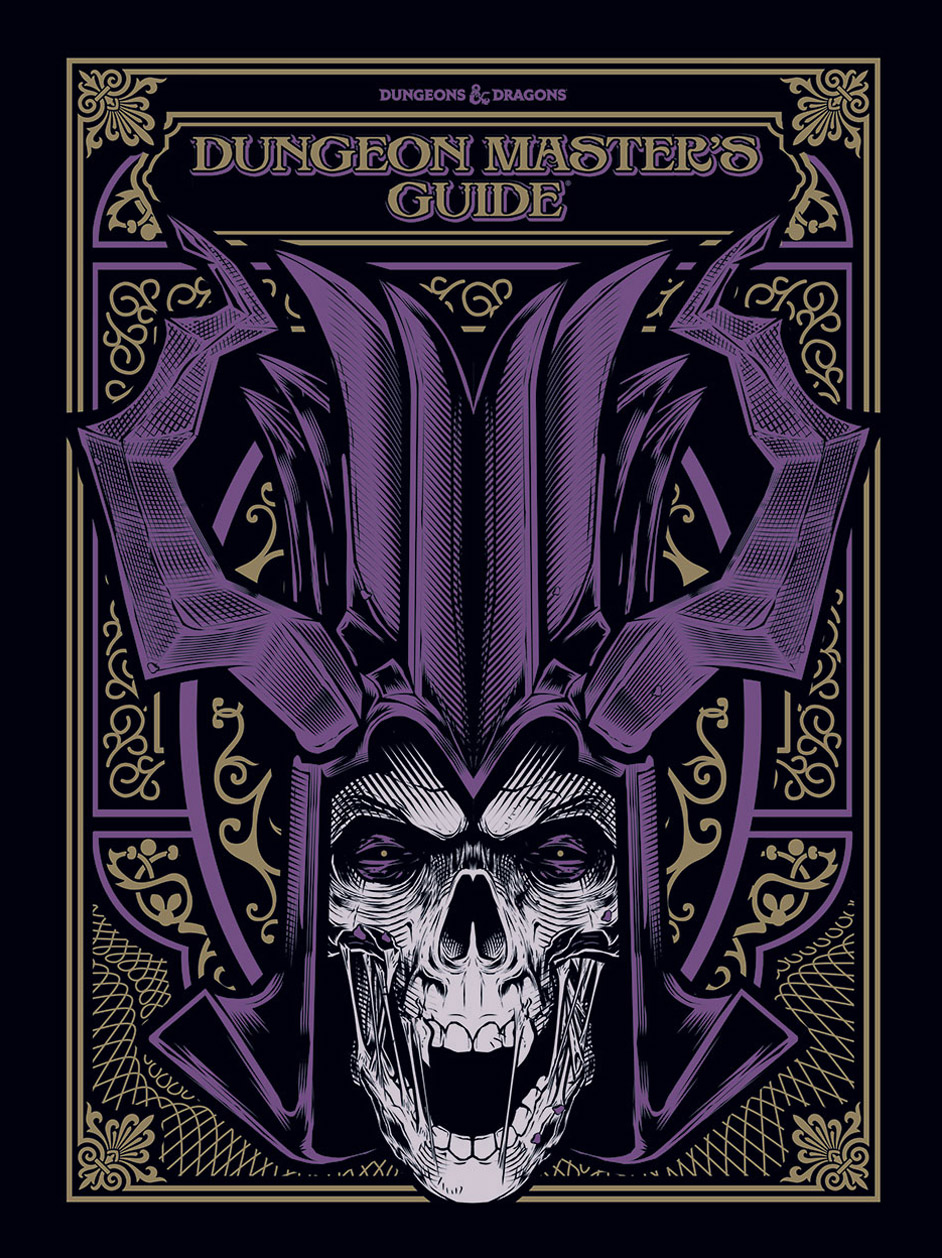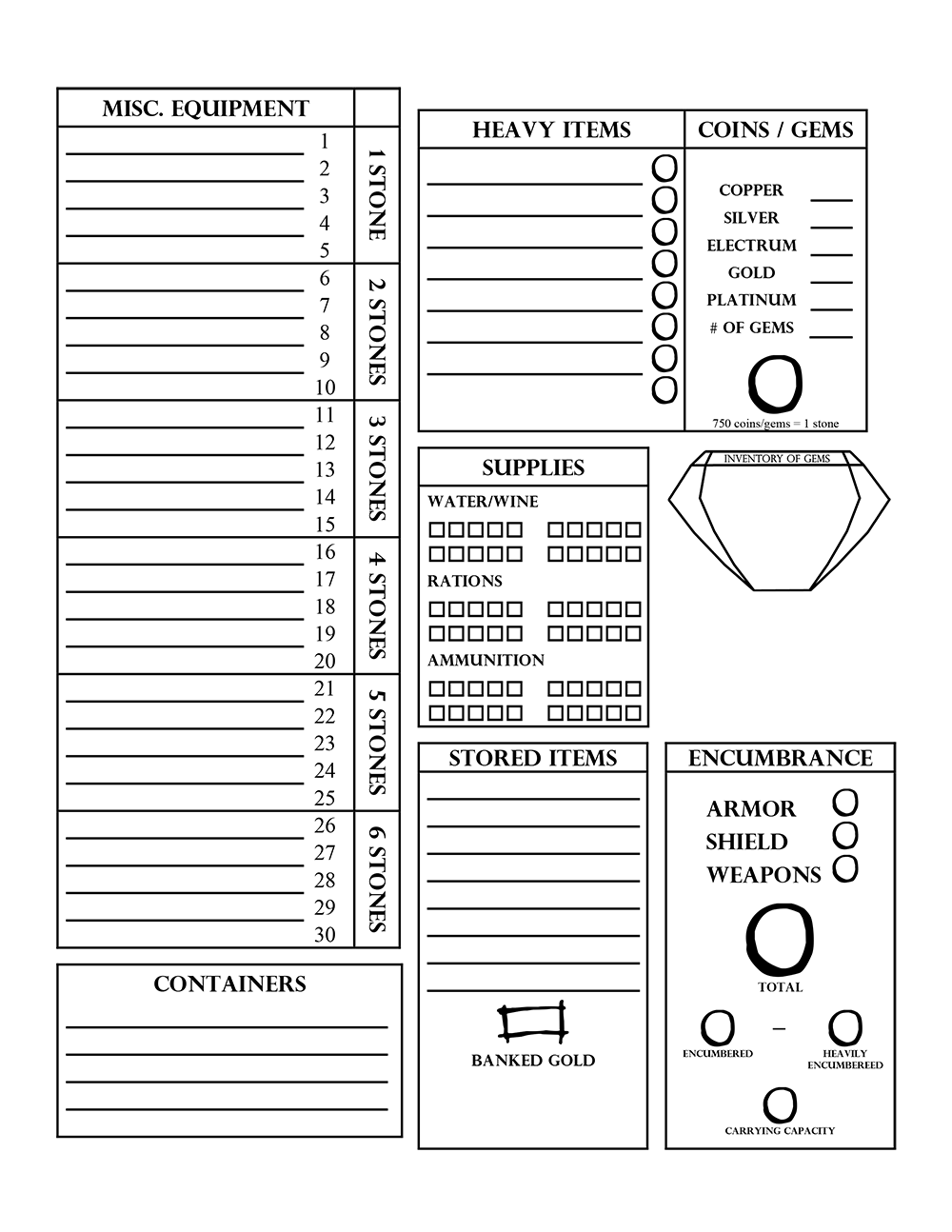 ThinkDM recently wrote a blog post discussing the skill list in 5th Edition called 5 Skill D&D. His two main points are,
ThinkDM recently wrote a blog post discussing the skill list in 5th Edition called 5 Skill D&D. His two main points are,
First: The optional rules that allow you to roll any Skill + Ability combination should just be the way that the game works rather than an optional rule. I enthusiastically endorse this: Not only is it basically a no-brainer to take advantage of this flexibility and utility, but if you DON’T use stuff like Charisma (Investigation) checks then there are some glaring holes in the default skill list.
Second: Once you’re using these optional rules, it becomes clear that there are many skills that don’t need to exist. The most clear-cut examples of this, in my opinion, are Athletics and Acrobatics. One of these is Physical Stuff + Strength while the other is Physical Stuff + Dexterity. If you can just combine a “Physical Stuff” skill with the appropriate ability score, then you clearly don’t need two different skills for this.
Concluding that the game, therefore, has a whole bunch of superfluous skills, ThinkDM aggressively eliminates and combines skill to end up with a list of just five skills:
- Fitness (Athletics, Acrobatics, Endurance)
- Speechcraft (Persuasion, Deception, Intimidation, Performance (oration))
- Stealth (Stealth, Deception (passing a disguise))
- Awareness (Investigation, Perception, Insight, Survival)
- Knack (Sleight of Hand, Medicine, Animal Handling, Performance (instrument))
(Note: He eliminates the Knowledge skills – Arcana, History, Religion, Nature, Medicine – entirely.)
While I agree with the general principles here, I have some quibbles with the, in my opinion, overzealous implementation. So let’s take a closer look at some of these decisions.
I’M SOLD
I’m sold on Fitness, Speechcraft, and Stealth.
Stealth is fairly self-explanatory: Most of the conflation here actually happened before 5th Edition was even published, which – as I’ve discussed in Random GM Tips: Stealthy Thoughts, among other places – is something I’m fully in favor of.
Lumping all the social skills into Speechcraft might initially seem too reductionist, but it’s another good example of how ability score pairings can be used to distinguish different uses of the skill and differentiate characters: Charisma + Speechcraft can be used for making a good first impression, seducing someone through sheer sex appeal, or swaying a crowd’s opinion through an emotional appeal. Strength + Speechcraft can be used for physically threatening someone. Intelligence + Speechcraft can be used for witty repartee. And so forth.
I’ve also found that this kind of conflation can sidestep the conceptual difficult of trying to figure out which skill is appropriate when someone tries to, for example, persuade the local garrison to join them by lying to them about the goblins’ intentions while subtly threatening to expose the garrison captain’s dark secret. (Logically the debate about whether this is Perception, Deception, or Intimidation should just shift to which ability score is the most appropriate; I’m just saying that, in my experience, this doesn’t usually happen. Don’t really know why, but people just seem more willing to let the muddy reality of most social interactions default to any appropriately invoked option when it’s ability scores. This also frequently flows in the opposite direction, with players moving away from one-note presentations of “this is my deception” or “this is me persuading her” to more nuanced portrayals within the broad rubric of a skill like Speechcraft. Your mileage may vary.)
I particularly like the name of Speechcraft. It has a nicely fantasy-esque feel to it; evocative, but not binding.
By contrast, I don’t like Fitness as the name for a skill. Fitness is not an action, but rather a state of being, and I don’t think it clearly captures the spirit of most such tests made at the table. I’d stick with Athletics.
AWARENESS
As I discuss at length in Rulings in Practice: Perception-Type Tests, I think there’s a lot of utility in clearly distinguishing between noticing things and actively investigating things. This becomes even clearer, I think, when you start combining them with different ability scores: Charisma + Investigation is canvassing information and rumor-gathering. Perception + Wisdom/Charisma, on the other hand, is reading body language and the like.
Lumping Survival in here doesn’t make any sense to me at all. The skill is a lot more than just following tracks and, in my opinion, should be important enough to most D&D campaigns to merit its own silo.
KNACK
Knack is all too clearly “here’s a bunch of skills I need to arbitrarily glom together so that I can hit an arbitrary clickbait title.” There’s little reason that the pick-pocket should also be the party’s best healer. Conversely, not everyone who is good at riding a horse should automatically be great at picking pockets.
So split those back out.
KNOWLEDGE
My personal proclivity is that not only should there be at least enough knowledge skills that everyone in the group can have a distinct expertise (which often means more knowledge skills than party members), but that there should be enough knowledge skills that it becomes quite likely that any given group will, in fact, have holes in their knowledge.
(Why? Because that forces them to either work around the gap in their knowledge, do research, seek out an expert, and/or set a personal goal to become the expert they need. And those are all interesting outcomes.)
As I mentioned above, ThinkDM eliminates all knowledge-type skills. He offers a contradictory hodgepodge of reasons for this (for example, “no one knows everything” but also “the GM should always just assume the PCs know everything”) which I could discuss at more length, but honestly I’m tired of explaining why failure is narratively interesting and delayed gratification is satisfying.
What I really want is for a knowledge skill list to completely cover the fields of knowledge in a setting. This doesn’t mean getting super granular in the distinctions (quantum mechanics vs. electromagnetics vs. optics). Often the opposite, in fact. When a question of knowledge arises in the setting, what I want is for there to be a clear skill check that can answer the question.
This is why I really dislike the incomplete fields of knowledge in 5th Edition’s current skill list and much prefer 3rd Edition’s comprehensive list. (3rd Edition was also designed to let people custom-design knowledge categories, although a surprising number of people never understood that.)
If we want to slice down the knowledge-type skills, I’d say start by saying that Backgrounds should grant proficiency in any related Knowledge checks.
And then my list of knowledge-type skills would be:
- Arcana
- Religion
- Lore
- Knowledge: (Specific Location)
With Lore here covering the entirety of mundane knowledge.
Thus we broadly distinguish between mystic shit, god-stuff, and everything else. This gives the opportunity to spread Knowledge around the table (instead of just one guy who’s a smarty-pants) and gives players the ability to flavor their character.
We’ve also given people a chance to say, “I know this city or forest or whatever really, really well.” It’s a skill type I often reach for as a GM (regardless of system) and I think it can be very flavorful for players looking to define their characters or give them a unique niche.
THE BIG LIST
- Animal Handling
- Arcana
- Athletics
- Investigation
- Knowledge: (Specific Location)
- Lore
- Medicine
- Perception
- Religion
- Sleight of Hand
- Speechcraft
- Stealth
- Survival
If you want an even tighter list, you can:
- Merge Investigation with Perception
- Fold Medicine into Lore
- Drop Sleight of Hand into Stealth
To give you a nice, notable number with 10 Skills.
TOOL PROFICIENCIES
In 5th Edition, of course, skills are only half the story. You’ve also got tool proficiencies.
You don’t have to muck about with these, but I think there’s definitely some conflation here that would be valuable, although it’s a lot more fidgety. (This is somewhat inherent in the decision to use tool proficiencies in the first place.) 5th Edition already sets precedent for this, however, with things like Vehicle (Land) and Vehicle (Water) proficiencies which cover a multitude of specific tools/vehicles.
The question I have is why other obvious candidates likes Musical Instruments and Gaming Sets weren’t similarly grouped together into a single proficiency.
At a certain point in staring at this, though, you realize it probably makes more sense to just create a list of skills that require tools to use:
- Alchemy
- Art
- Craft
- Gaming
- Music
- Thievery
- Vehicle (Air/Land/Water)
With the following notes:
- Navigator’s and Cartography Tools would be conflated into Survival.
- Forgery Kit would be conflated into Stealth or Thievery.
- Disguise Kit would be conflated into Stealth.
- Herbalism Kit is conflated into Alchemy.
- Poisoner’s Kit is conflated into Thievery (although you could make a case for a separate skill).
To make this actually work, of course, you’ll have to do additional work on how characters gain skills. May not be worth the headache, so keeping this short list in a separate silo (which can be trained) may still make the most sense.















